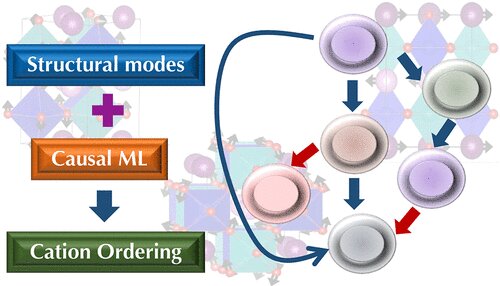Researchers at the Department of Energy’s Oak Ridge National Laboratory have conducted a study that could lead to the development of more powerful and longer-lasting batteries and memory devices. The study has examined the ordering, or pattern formation, of positively charged ions, known as cations, in double perovskite oxides; a type of metal that is considered promising as a potential source of cleaner, more sustainable energy for its magnetism and ability to conduct electricity.
The Research
The research paper, “Insights into Cation Ordering of Double Perovskite Oxides from Machine Learning and Causal Relations,” published in Chemistry of Materials, aims to understand the causes of cation ordering in double perovskite oxides. The study was led by Ayana Ghosh, an ORNL research scientist and the paper’s lead author, and researchers from the SRM Institute of Science and Technology in Chennai, India.
The team sought to determine how the patterns formed by cations affect stability in double perovskites. The more stable the material, the better suited it is for potential energy applications. The researchers developed a formula from the study that they believe could be used to grow or otherwise create these perovskite materials for such applications as batteries, memory devices and capacitors.
The Computational Framework
To achieve their goal, the team developed a new computational framework that combined causal analysis and traditional machine learning with density functional theory, which estimates materials’ electronic and atomic structures. Researchers trained the algorithm on various cation types and patterns within double perovskite systems to predict conditions that lead to specific ordering of cations.
The team combined the cause-and-effect relationships observed with the findings from standard predictive machine learning algorithms. Analysis of the results identified trilinear coupling, an interaction among three types of particles, as the necessary condition behind clear layered ordering—one of the essential patterns of cation ordering. Trilinear coupling combines three types of structural modes that push the cations through the necessary phases to result in properties such as multiferroicity, the combination of magnetization and polarization that makes perovskites promising for energy applications.
New Insights
The study has provided new insights into the fundamental mechanism behind these properties, which could lead to the creation of new phases of double perovskite oxides. The findings give researchers a roadmap to explore further based on these principles. Ghosh said, “This new insight gives us a roadmap to go beyond what we’ve already known from theory. Now we can explore further based on these principles.”
The study conducted by researchers at the Department of Energy’s Oak Ridge National Laboratory has provided new insights into the ordering of cations in double perovskite oxides, which could lead to the creation of more powerful and longer-lasting batteries and memory devices. The computational framework developed by the team combined causal analysis and traditional machine learning with density functional theory, which allowed them to identify trilinear coupling as the necessary condition behind clear layered ordering, one of the essential patterns of cation ordering. The findings give researchers a roadmap to explore further based on these principles.


Leave a Reply